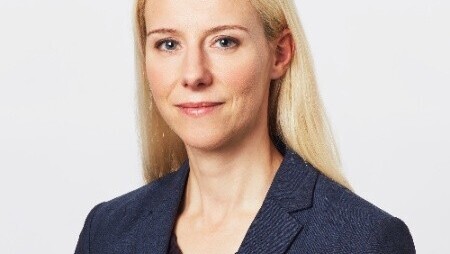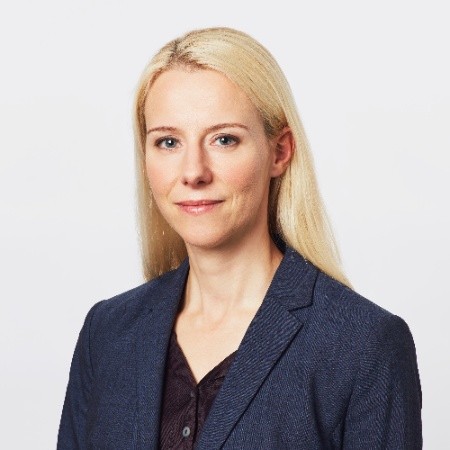
PPF’s Claire Curtin: ‘Engagement is our main climate risk management tool’
PPF's head of ESG & sustainability explains the fund's approach to engaging with portfolio companies, external fund managers and policymakers
The Pension Protection Fund (PPF) and has been protecting members of eligible defined benefit (DB) pension schemes across the United Kingdom since 2005.
With 295,000 members, it is one of the UK's largest asset owners with £33 billion of assets under management.
Net Zero Investor sat down with PPF’s head of ESG & sustainability, Claire Curtin, to talk about the fund’s net zero strategy, particularly its emphasis on engaging with carbon intensive sectors and “transition investments”.
Could you give me a quick run-down of your climate strategy?
Engagement is our main climate risk management tool. For the last two years, we’ve been working hard to assess how well our investments, across all asset classes, align with our ambition to support a global transition to net zero. That’s the first step to engagement – having the right information.
Unfortunately, the data just isn't there at the moment. In certain cases, especially in private markets, we have to use proxy data to make our assessments. Public markets are much better, but quality is still doubtful in some areas.
How are you working around the data gaps?
Collaboration is vital. We are focusing on industry-wide initiatives that aim to improve private markets disclosures, such as BlackRock’s eFront platform. This year, eFront’s ESG Outreach solution has been rolled out to a much larger number of general partners and portfolio companies. This is great to see, but it has meant investing more time in educating and talking to companies that have never had to think about reporting on environmental issues before.
The PPF sending a clunky spreadsheet to thousands of private companies won’t solve the wider problem. We need standardisation, and standardisation requires collaboration, not re-inventing the wheel.
We are starting to see some progress.
In addition to eFront, are you looking at any other initiatives?
Part of the challenge entails navigating the competing initiatives that sometimes override each other. What we've done across all our data management is start with our portfolio management systems, because we've got a huge number of holdings and a reasonable number of different managers across different asset classes.
As the internal portfolio managers work closely with the portfolios on these systems, it makes sense to start there rather than going to multiple different places to get the relevant data.
How do you engage with external portfolio managers to ensure their approach aligns with your own net zero expectations?
We have a few non-negotiables that are in place for all of our managers. And if a manager doesn't sign up to those, they don't get funded. It's as simple as that. Depending on the asset class, these non-negotiables focus on ensuring an approach to integrating any material ESG consideration, stewardship to the best ability within that asset class, and reporting. Reporting is really where we’re pushing them at the moment.
If a manager doesn't have a net zero commitment, that doesn't preclude us for the time being, but we need to know that our interests align and that the disclosure and transparency will be there. We really want to see the outcomes of engagements as they're happening and support a transition perspective.
How do you go about supporting transition activities?
Infrastructure is a good example of where engagements and transition investments are key. We don't see a big enough pool of green infrastructure opportunities to focus exclusively on them. That means we look to invest in asset managers that are identifying transition opportunities, even if the investment raises our carbon footprint in the short term.
If the forward-looking trajectory aligns with what we want to see, then we will consider investment as long as it also meets our investment risk/return requirements.
We have a few non-negotiables that are in place for all of our managers. And if a manager doesn't sign up to those, they don't get funded. It's as simple as that.

Can you describe what a transition opportunity might look like?
A couple of years ago, we invested in a project in the University of Iowa, alongside one of our European infrastructure managers. The project aimed at funding the university’s power systems away from coal. The university had made a commitment to be coal free by 2025 and to reduce their overall emissions across the whole campus and university hospital by 50% by 2030. The investment included improvements to energy efficiency and water management, and a shift to renewables.
We also have green, social and sustainability bonds in our portfolios.
What are the challenges around quantifying engagement and measuring progress?
Our listed holdings amount to around 3,500 companies. Creating a “climate watch list” has allowed us to focus on the 87 companies that represent over 70% of our financed emissions so we are able to more efficiently target the high emitters.
We then bucket those 87 companies into different engagement strategy categories. For example, the first step for some Asian companies has to be disclosures. For those companies, it's a question of including them in the CDP Non-Disclosure Campaign to encourage them to start reporting. You will know if the engagement is successful if you get the disclosure, but it doesn't stop there. That’s just the start.
A next step may focus on the quality of the disclosures, or more granular asks around, say, scope three reporting.
That sort of engagement is very different to how we would engage with a company that we might already consider as aligned within our portfolio alignment assessments, but may still have challenges.
For this, we tend to rely on EOS and their sector specialists to have a much more direct conversation with the company, but if EOS doesn’t cover the company, we will engage ourselves or via our managers.
In 2022/3, you engaged with 686 companies, up from 186. What was behind that significant rise?
The most significant driver is that we brought our passive equity portfolio into the mandate of our EOS relationship at the end of the previous financial year. That brought the coverage of a couple of actively managed portfolios of around 500 names up to 2000 names.
In the last year, we’ve also seen much better coverage from EOS on bond issuers. In addition, we have a fair amount of in-house investments in UK credit and cash. Bringing those portfolios into the EOS mandate over the last year has helped sharpen what we expect from corporates, regardless of which part of the capital structure we are investing in.
In private markets, there is less transparency than public markets, but do you find you can have more of an influence when you do engage?
Definitely. Especially if we have a board seat, or if our underlying general partner has board seats, then you can get much greater access.
Do you engage with policymakers?
Policy engagement is absolutely critical. We need the policymakers in all of this. It can't just be the private sector coming up with solutions. We tend to use memberships where we can with the policymaking side, or if we've got emerging market debt portfolios where the managers are much closer to talking to Treasury Departments in different countries. The IIGCC in particular is the main membership through which we try to collaborate with policymakers in a partnership approach.
What is the key challenge going forward?
We're still very much on the journey. A lot of processes need to be put in place before we start seeing real economy progress on decarbonisation.




